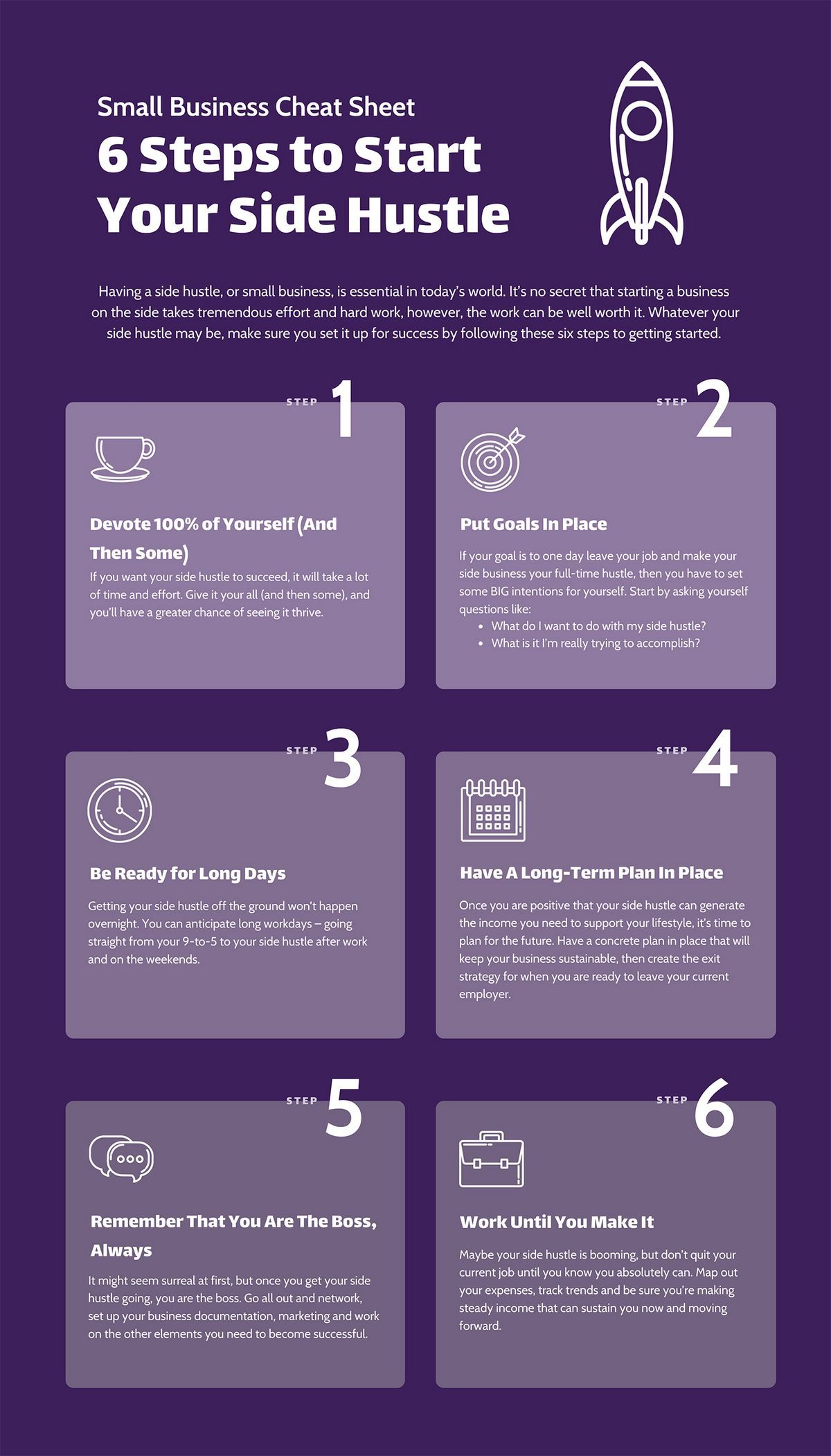
Contents
How to Start a Side Hustle
Everyone seems to have a side hustle these days, and for good reason. A side hustle allows you to flex your entrepreneurial muscles and bring in extra income.
But don’t treat your side gig differently from a business if you want it to grow and become your full-time job.
In this guide, we’ll walk you through how to start a money-making side hustle, balance it with your full-time job, and know when it’s time to go all in.
How to Start a Side Hustle
Starting a side hustle is similar to starting a full-time business. We’ll focus on the key steps and time-investment decisions to get your part-time business up and running.
1. Pick an Interesting Side Hustle
There are thousands of potential side hustle ideas. It may be tempting to choose something easy or passive, but to start the perfect side hustle, choose something that leverages your existing skillset or something you’re passionate about.
This not only makes the work enjoyable but also easier to take on. Whether it’s a beloved hobby, a mastered skill, or a gap you’ve noticed in the market, your side hustle should excite and motivate you.
2. Decide on Your Commitment
When launching a side business, consider how much time and energy you can realistically commit. Be honest about your availability and set boundaries to maintain a healthy work-life balance. Dedicate enough time for your business to gain traction and grow.
Review your current habits to identify when you have downtime. Replace unproductive or enjoyable activities with time spent on your side hustle.
3. Determine Your Revenue Model
Figure out how your side hustle will generate income. Will you sell a product or service? Set a flat fee or an hourly rate? Consider your pricing compared to competitors to ensure viability and scalability.
4. Create a One-Page Business Plan
Even as a side hustle, treat it like a business and create a one-page business plan. Clarify your vision, set goals, and outline your strategy, including target market, pricing, marketing, and financial projections.
5. Set Goals and Timelines
Set revenue goals based on why you’re launching a side hustle. Consider your time investment and be realistic about how much you can make. Research your competitors to establish expectations.
6. Ensure Legal Compliance
Make sure your side hustle is legal by registering your business, obtaining necessary licenses or permits, and understanding tax obligations. Set up a bookkeeping process to track expenses and revenue.
Transitioning from Side Hustle to Full-Time Business
Even if it’s not your primary goal, there may come a time when you consider turning your side hustle into a full-time business. Here are curated resources to help you make that decision.
5 Indicators You’re Ready for Full-Time
Unsure if it’s the right time to quit your job and focus solely on your business? These are the signs that indicate you’re ready.
Questions to Ask Before Quitting Your Job
Answer these questions before resigning from your job.
Transitioning from Day Job to Self-Employment
Additional guidance on successfully transitioning from employee to business owner.
Reasons to Start a Side Hustle
Starting a side hustle is an excellent way to explore entrepreneurship without risking your steady income. It allows you to test the waters, learn new skills, and potentially build a business that could replace your full-time job.
Here are some additional reasons why starting a side hustle can be beneficial:
- Financial Safety Net: A side hustle provides additional income, particularly during uncertain economic times, helping with debt repayment, savings, or lifestyle upgrades.
- Skill Development: A side hustle allows you to gain experience and develop new skills outside of your regular job, enhancing your marketability and opening new career opportunities.
- Creative Outlet: If your full-time job doesn’t tap into your creativity, a side hustle can provide an outlet, making work fulfilling and improving your mental health.
- Risk Management: Starting a business is risky, but a side hustle allows you to experiment and learn from mistakes without the pressure of relying on it for your livelihood.
A side hustle is more than just a way to make extra money. It can lead to personal growth, financial stability, and entrepreneurial success.
Treat Your Side Hustle as a Business
Whether you want extra income or a low-risk way to test a business idea, treat your side hustle like a business. Create a business plan, identify potential customers, understand revenue streams, and ensure legal compliance. Following these steps increases your chances of achieving your side gig goals.
Want to learn more about a specific step? Check out our comprehensive guide on starting a business for more information.
Hello!
I’m Andrew Brooks, a seasoned finance consultant from the USA and the mind behind phonenumber247.com.
My career is built on a foundation of helping individuals and businesses thrive financially in an ever-changing economic landscape. At phonenumber247.com, my aim is to demystify the complex world of finance, providing clear, actionable advice that can help you navigate your financial journey with confidence. Whether it’s personal finance management, investment strategies, or understanding the nuances of market dynamics, I’m here to share insights and tools that can propel you towards your financial goals.
Welcome to my digital space, where every piece of advice is a step closer to financial clarity and success!
